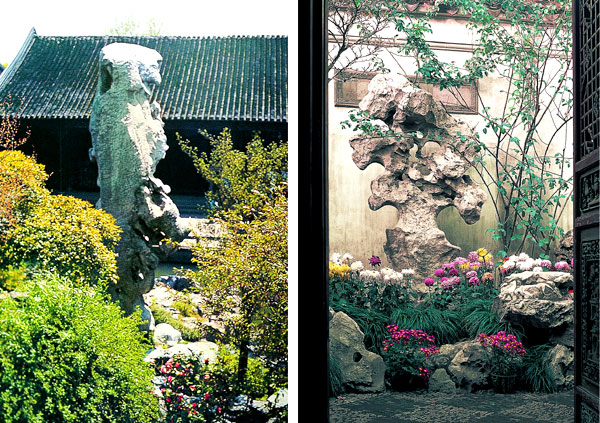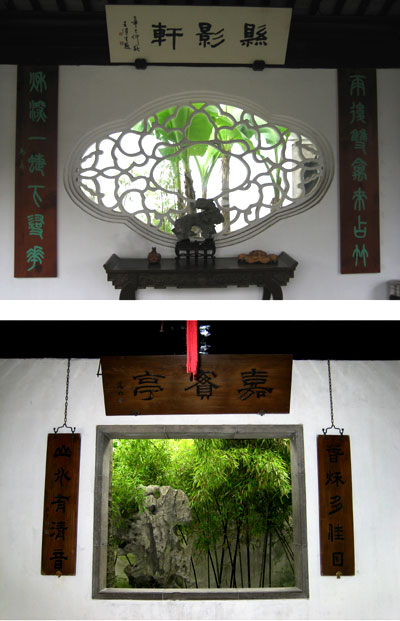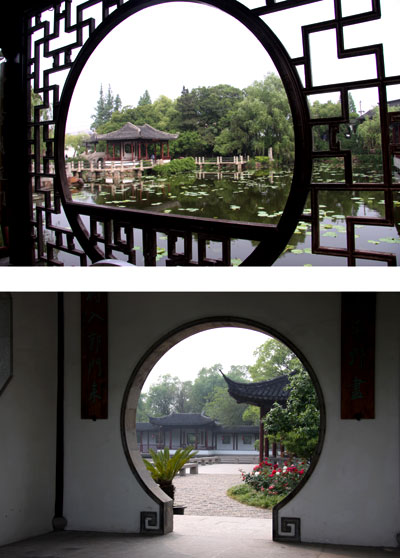2. Rockeries
 [Photo by Lou Qingxi/For China Daily]
[Photo by Lou Qingxi/For China Daily]
Excavating earth to make ponds or artificial hills was part of the designer's pursuit of natural beauty. When there was no readily available water source or low land within the garden, it became necessary to use hills and rocks as themes to accentuate the landscape.
During the Qing dynasty (1644-1911), the use of lake stones in rockery design became popular. The number of rockeries and the quality of each single rockery then became the sole criterion for evaluating the superiority of a garden.
3. Plants
 [Photo by Lou Qingxi/For China Daily]
[Photo by Lou Qingxi/For China Daily]
Plants in a garden are like hair on a person, making up an essential element of the garden's ecological environment. They can be set against hills, around ponds and near constructions to form picturesque scenery.
The chosen plants were usually traditional local species, planted naturally to form a landscape of mountain forests, which change colors in different seasons. Among them, ancient trees were of special value, as they served as silent witnesses of history. In Jiangsu's gardens, trees older than 100 years are commonly found.
4. Picture windows
 [Photo by Lou Qingxi/For China Daily]
[Photo by Lou Qingxi/For China Daily]
Many halls and verandas opened to gardens through picture windows that frame the landscape and bring the outdoors inside. Unlike a static painting, the objects in the window change color and content in different seasons and weather conditions, and the view moves, as wind blows bamboo or a bird comes into the frame.
